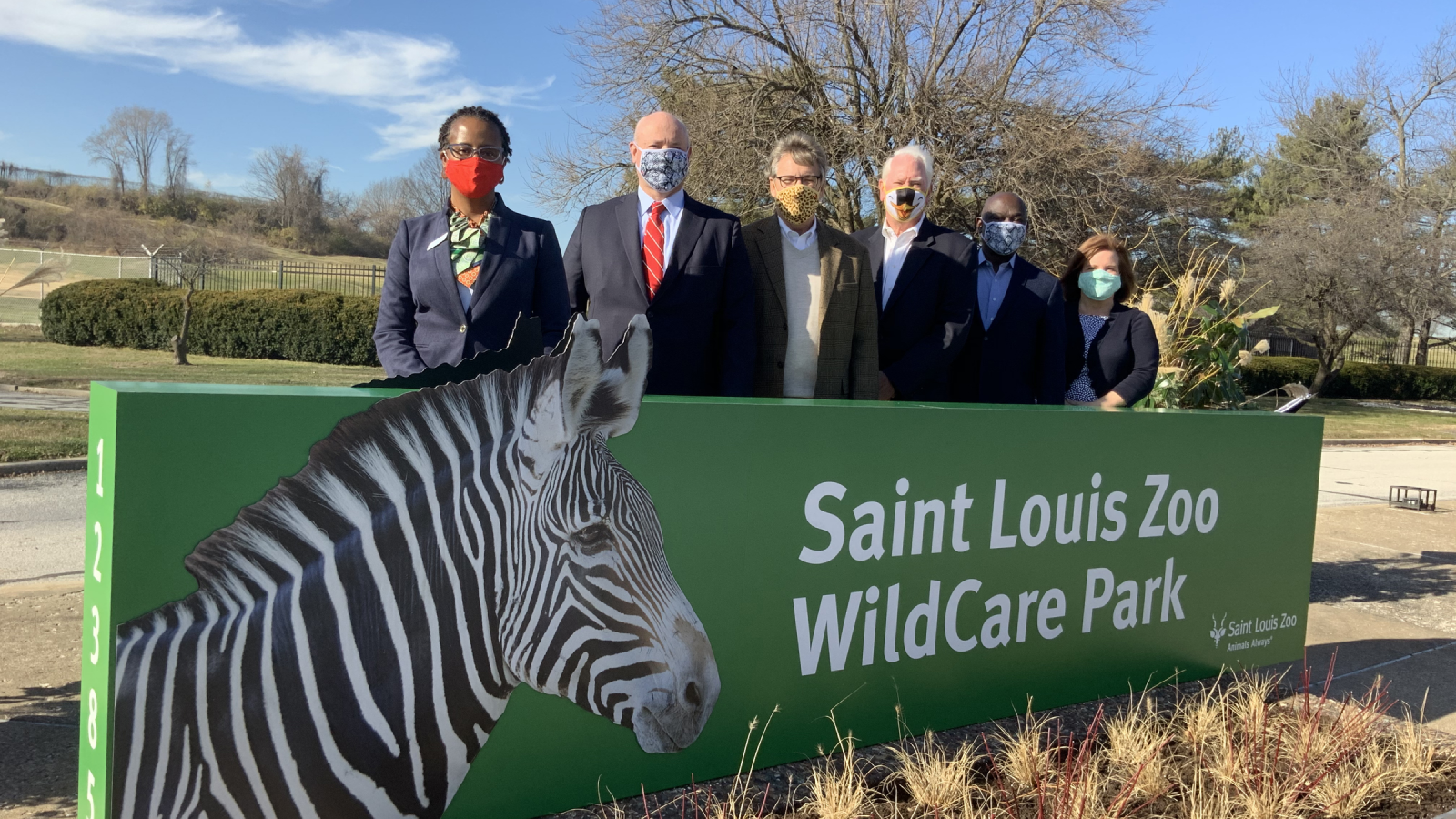Saint Louis Zoo WildCare Park
Saint Louis Zoo WildCare Park is a world-class safari park and conservation center set to open in 2027 on 425 acres near the confluence of the Mississippi and Missouri Rivers. Thanks to our donors, supporters and the taxpayers of St. Louis County, the Zoo is building a destination where guests can connect to wildlife in new ways alongside a conservation center dedicated to supporting some of the most endangered species in the world.
Planned guest experiences
-
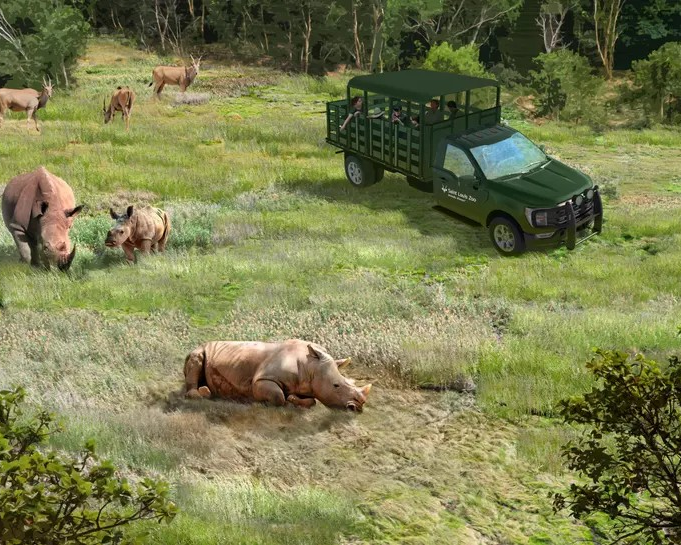
Woodland and Savanna Safaris
WildCare Park will feature two guided tours in safari vehicles bringing guests right into the habitats of southern white rhinos, giraffes, zebras, antelope and other species.
-
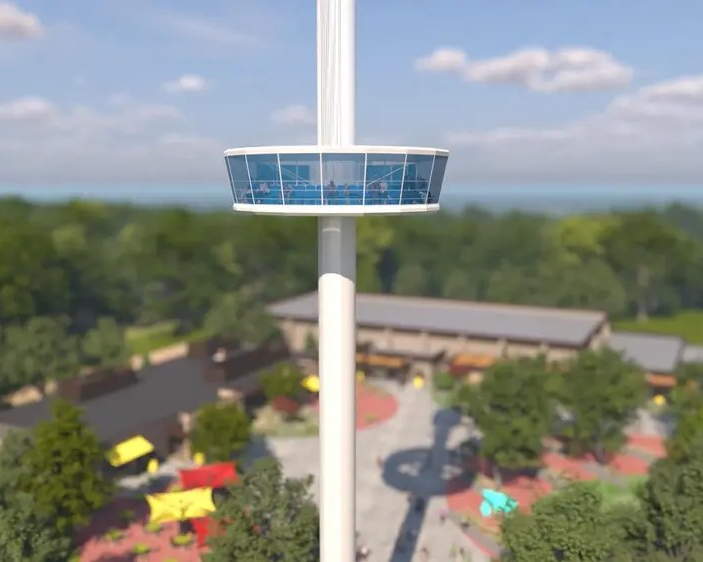
Observation tower
In the center of WildCare Park, an observation tower will lift guests 11 stories high to get a 360-degree view of WildCare Park, the cityscape and the confluence of the Missouri and Mississippi Rivers.
-
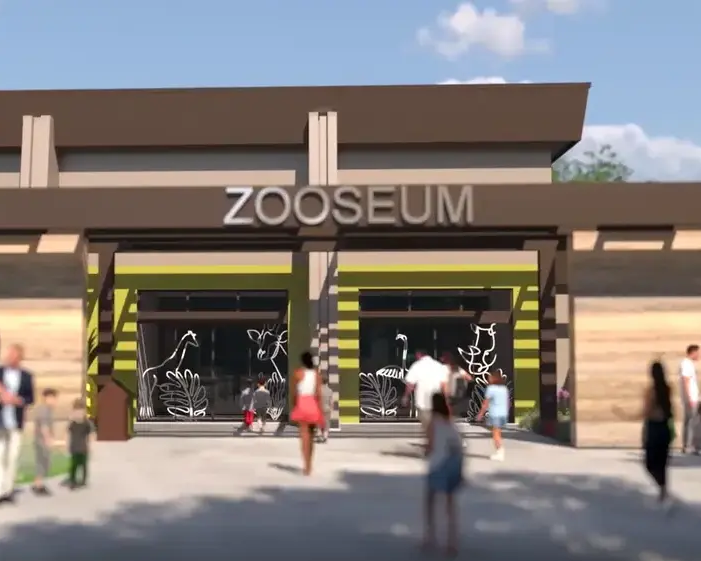
Zoo museum
This interactive museum will be a mix of a zoo and a science center that will use technology like virtual reality to show guests how animals experience the world.
-
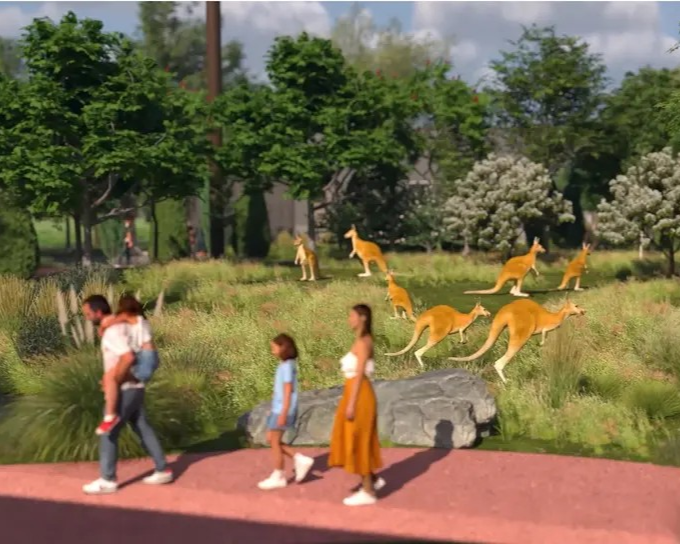
Walking safari
Guests can walk right through a habitat of kangaroos and wallabys with no barrier between them and the animals.
-
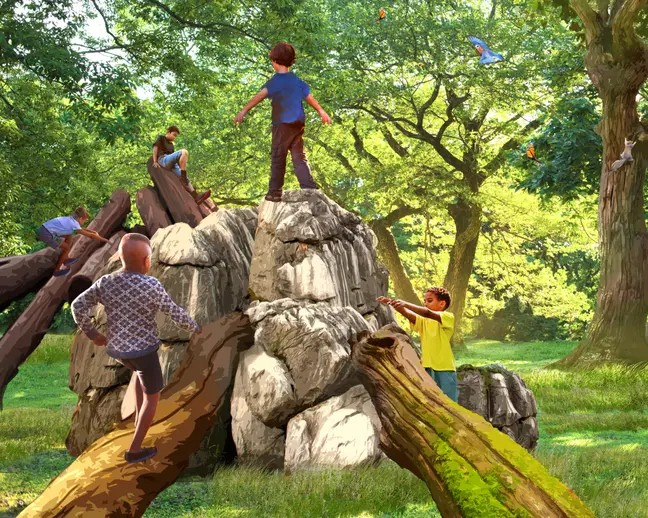
Nature trail and play area
WildCare Park will feature 1.5 miles of nature trails and a nature-based playground that will immerse children and adults into the surrounding landscape.
-
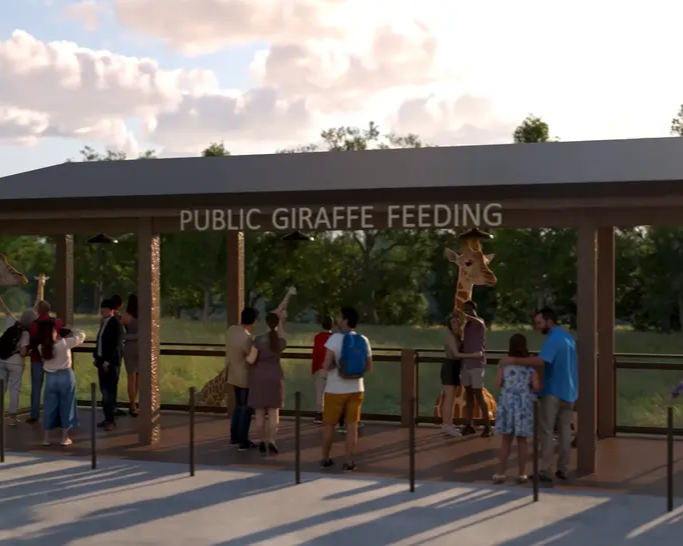
Public giraffe feeding
This unique animal experience will put guests at head height to our giraffe herd to feed them greens, getting an up-close view of their 18-inch tongues.
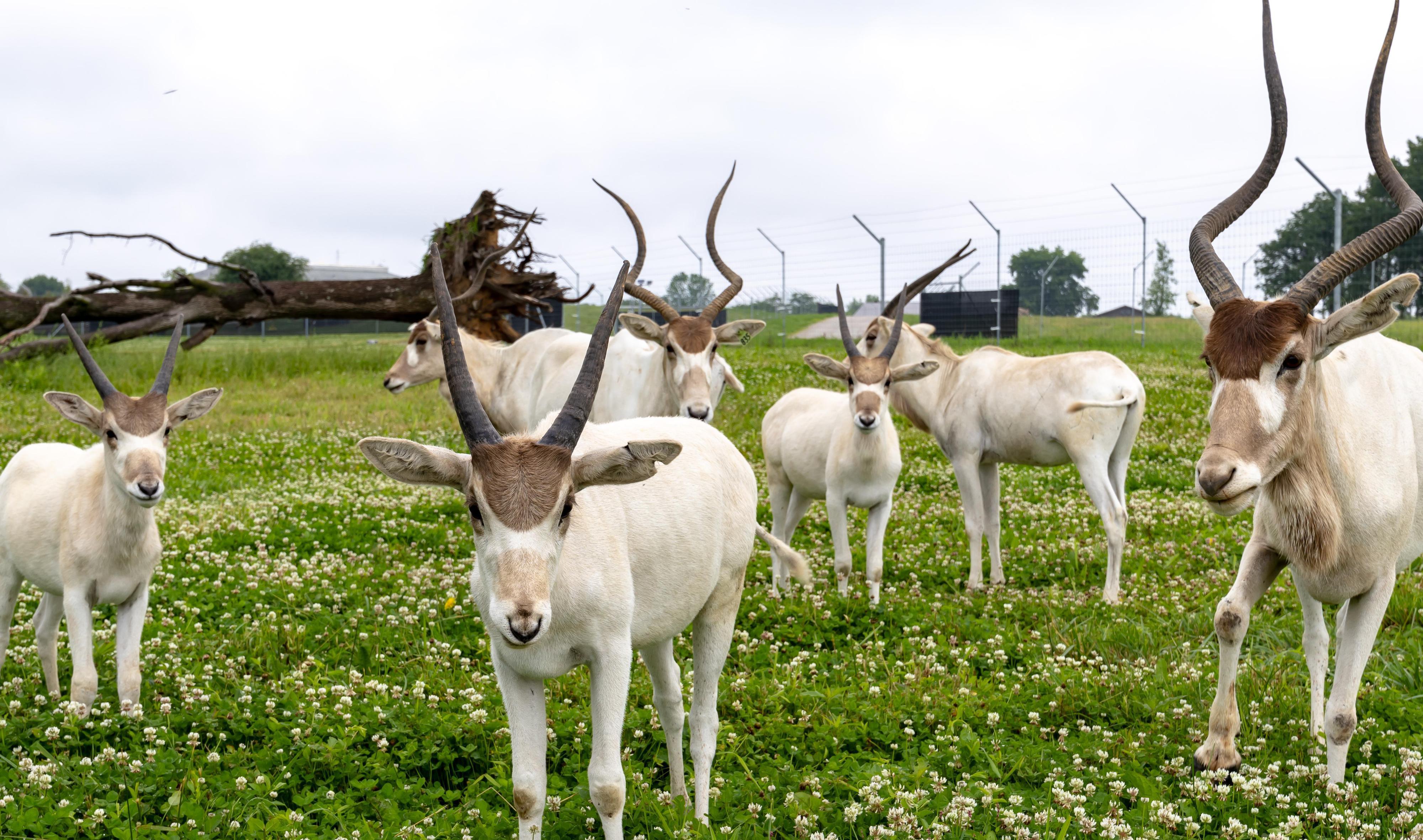
The Kent Family Conservation and Animal Science Center
At the Kent Family Conservation and Animal Science Center our team will work to sustain populations of endangered species, conduct research and engage in applied conservation programs. This non-public area of WildCare Park features five barns and 61 acres dedicated to breeding endangered and critically endangered hoofed mammals like the Grevy's zebra, addax, Somali wild ass and mountain bongo.
The Zoo has a long history of helping bring species back from the brink of extinction. This facility dedicated to assuring species survival, both in human care and in the wild, is more important now more than ever.
WildCare Park news and announcements
October 2025: Giraffes make a home at WildCare Park
Saint Louis Zoo WildCare Park welcomed its first two resident giraffes this month.
Mo, a 21-month-old male reticulated giraffe from Reid Park Zoo in Tucson, Arizona, arrived on Oct. 11. A few days later, Daniel, a 20-month-old reticulated giraffe from The Living Desert Zoo and Gardens in California, joined him. Not yet fully grown, the young giraffes today stand at 11 and 13 feet tall. Both giraffes are settling in well as the first residents of WildCare Park’s state-of-the-art, 38.5-foot-tall giraffe barn. Several more giraffes are expected to move into their new home at the park within the next year with as many as 10 to 15 living at WildCare Park by the 2027 opening.
“Giraffes will be some of WildCare Park’s largest and most iconic species,” said Martha Fischer, general curator at WildCare Park. “As our herd grows, I know the sight of a dozen or more of these remarkable animals roaming the landscape will be unforgettable for guests.”
All moves were recommended by the Association of Zoos & Aquariums Species Survival Plan (SSP), a collaborative breeding program among accredited North American zoos. The SSP is dedicated to creating a genetically healthy population of animals in human care to serve as a safety net against extinction.
Read the full announcement at stlzoo.org/news/firstgiraffes.
September 2025: First five rhinos arrive
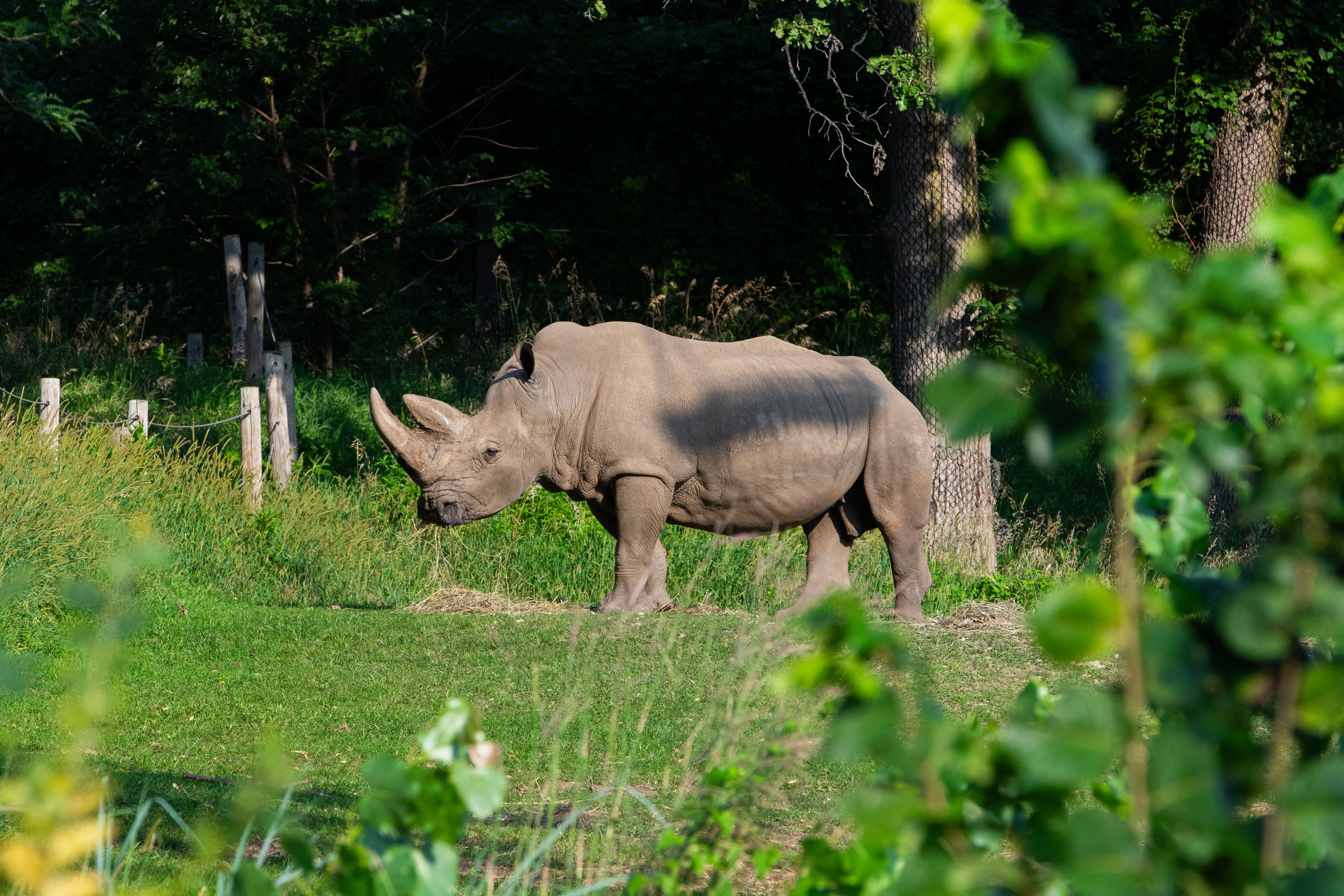
Saint Louis Zoo WildCare Park celebrated a historic moment with the arrival of its first rhino herd in late September 2025.
Five southern white rhinoceroses arrived over four days and quickly settled in well to the brand-new, state-of-the-art rhino barn at WildCare Park.
Four females—Nikita, Helena, Amani and her daughter Future—arrived from San Diego Zoo Safari Park. One male, Newton, came to WildCare Park from Omaha’s Henry Doorly Zoo & Aquarium.
As the world’s second largest land animal, the rhinos at WildCare Park weigh between 4,000 and 5,300 pounds. They range in age from 5 to 27 years old.
The new herd marks the first time in decades that the Saint Louis Zoo will care for white rhinos.
Read the Zoo's full public announcement about the first WildCare Park rhino herd at stlzoo.org/news/firstrhinos.
July 2025: First camels settling in at WildCare Park
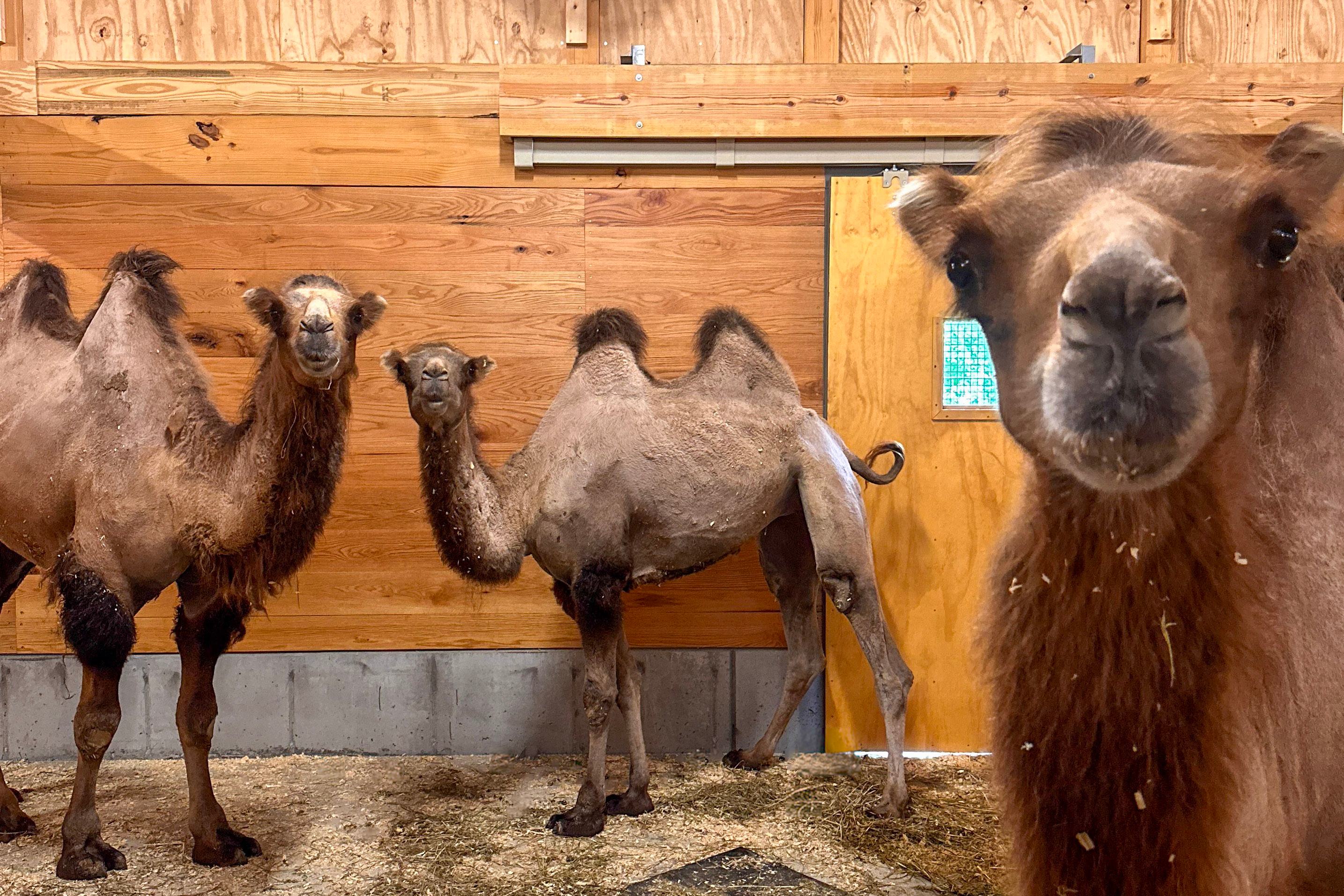
Meet the first members of WildCare Park's camel herd: Jasper, Opal and Sardonyx.
The three young Bactrian camels (ages 1 and 2) named after precious gems arrived to WildCare Park this summer and are settling in comfortably in a barn off the Woodland Safari pasture.
Bactrian camels are built for extremes: Temperatures in their native range, the Gobi Desert of Mongolia, can swing from -20°F to 120°F. This species is the only camel still roaming in the wild, though wild herds are rare. Most are domesticated today.
Guests will be able to meet these desert gems on guided safaris when WildCare Park opens in 2027. Bactrian camels will also remain at the Saint Louis Zoo in Forest Park where the Zoo has cared for this iconic two-humped species for many years.
June 2025: First banteng calf born
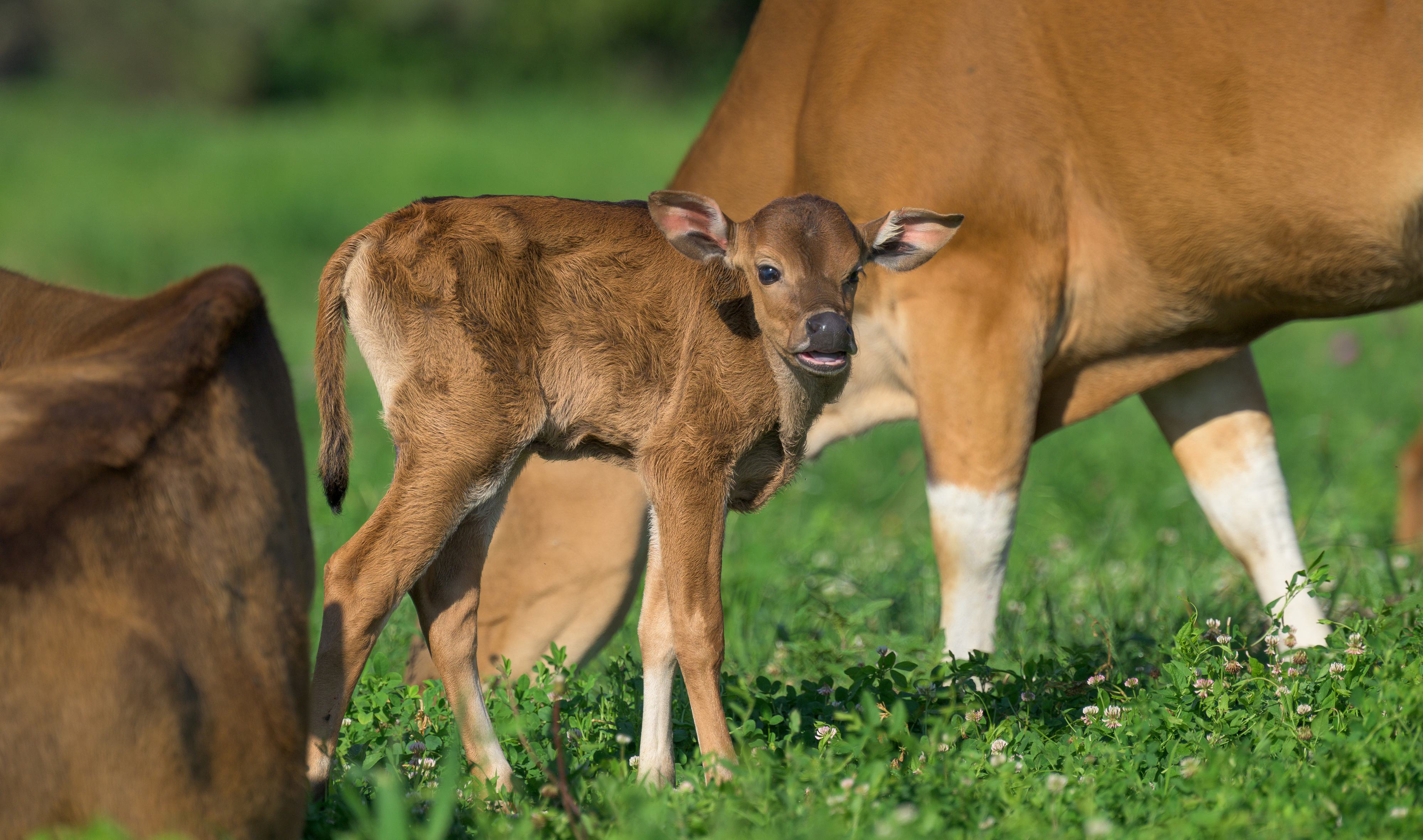
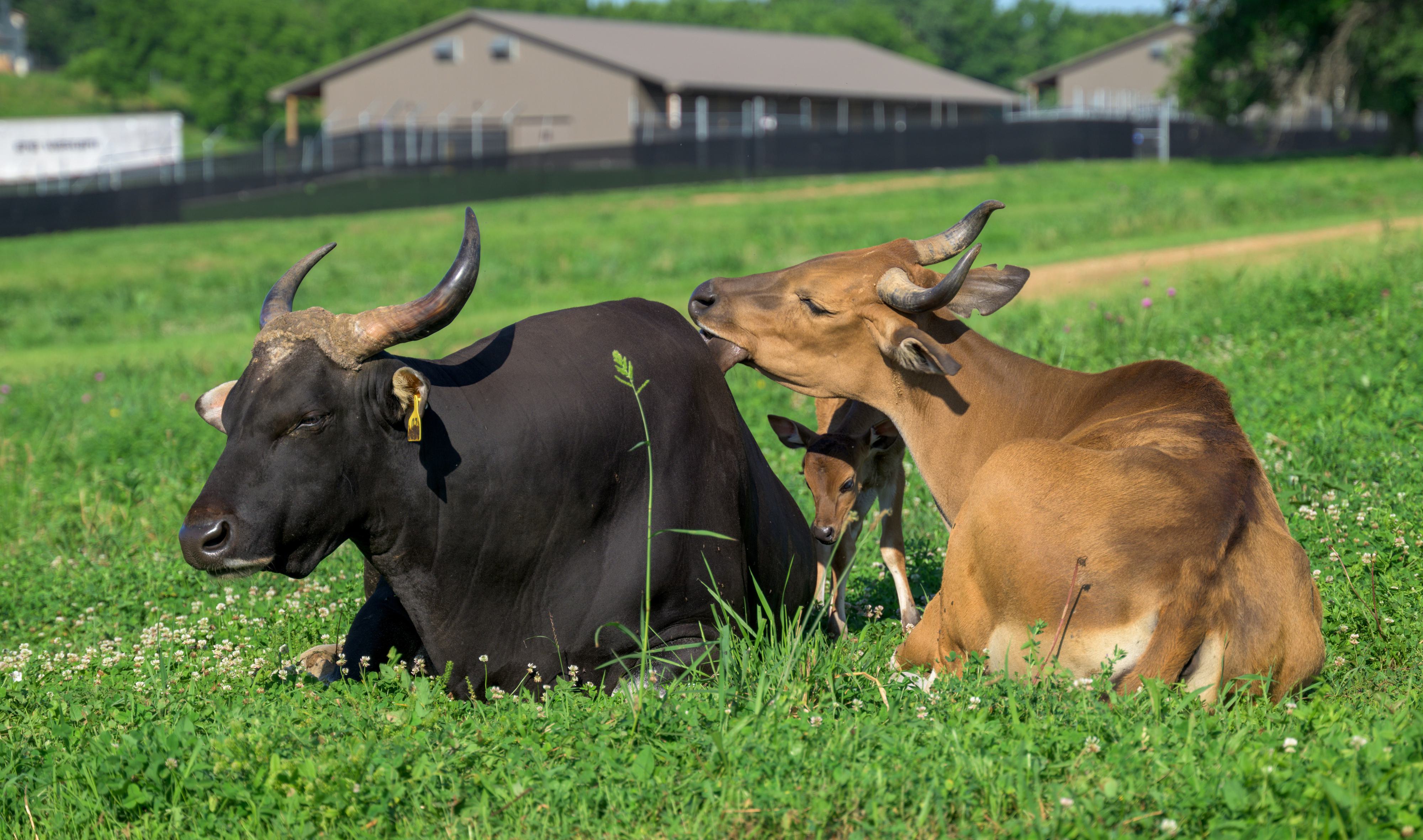
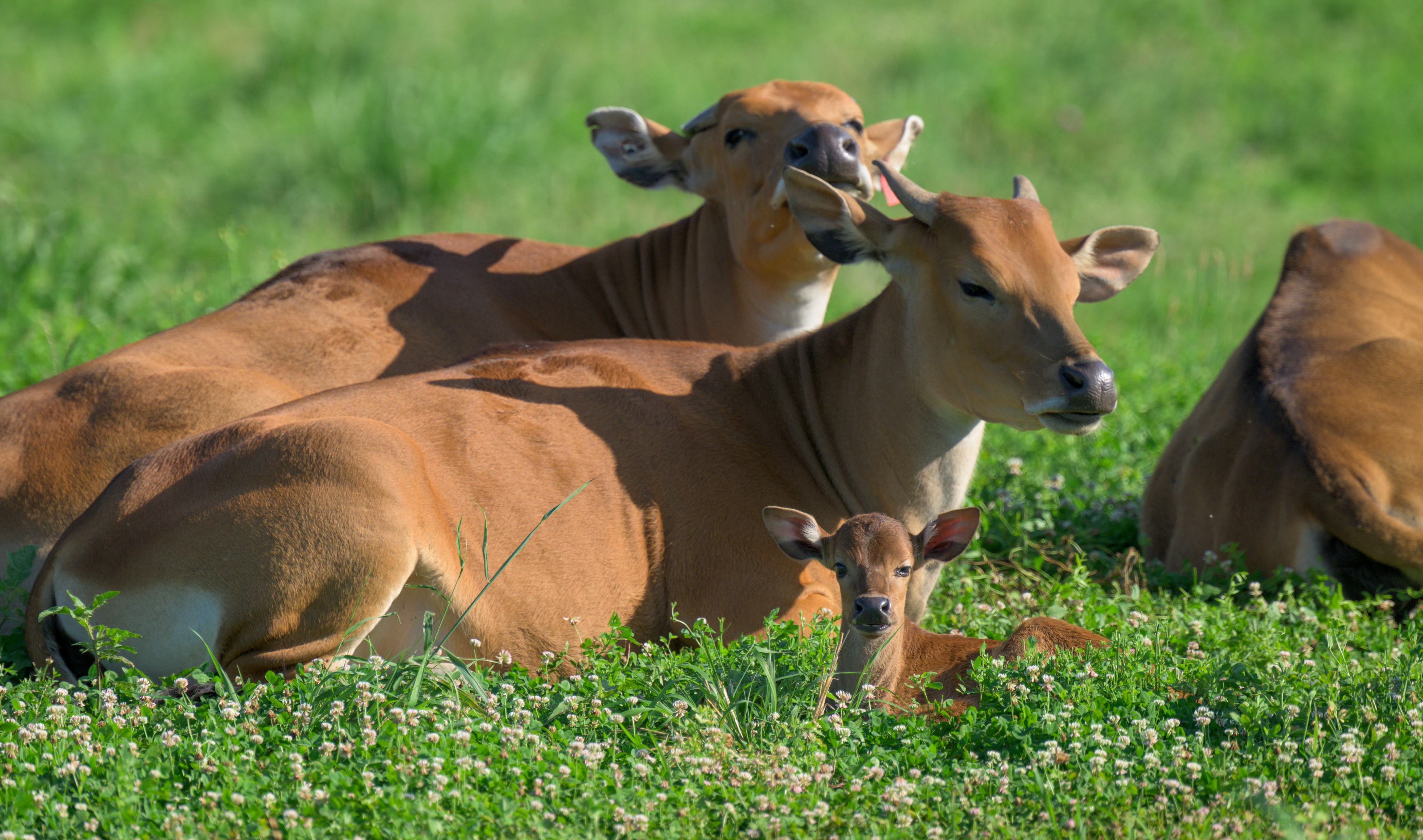
Say hello to Rutabaga, the first-ever banteng born at WildCare Park.
This little “tuber” was born June 6 weighing about 31 lbs. to mother Rhubarb and dad Bruno. Banteng males start life a copper red color but gradually turn black as they mature.
Rutabaga’s small red head can often be seen popping out of the grass in the pasture as he settles in with the five other members of the WildCare Park banteng herd.
Banteng are a critically endangered species of wild cattle endemic to Indonesia and other parts of Southeast Asia. Only around 8,000 remain in the wild today.
To date, there have been 16 births of endangered animals at WildCare Park with many more to come before the park opens to the public in 2027.
December 2025: First Przewalski horses arrive
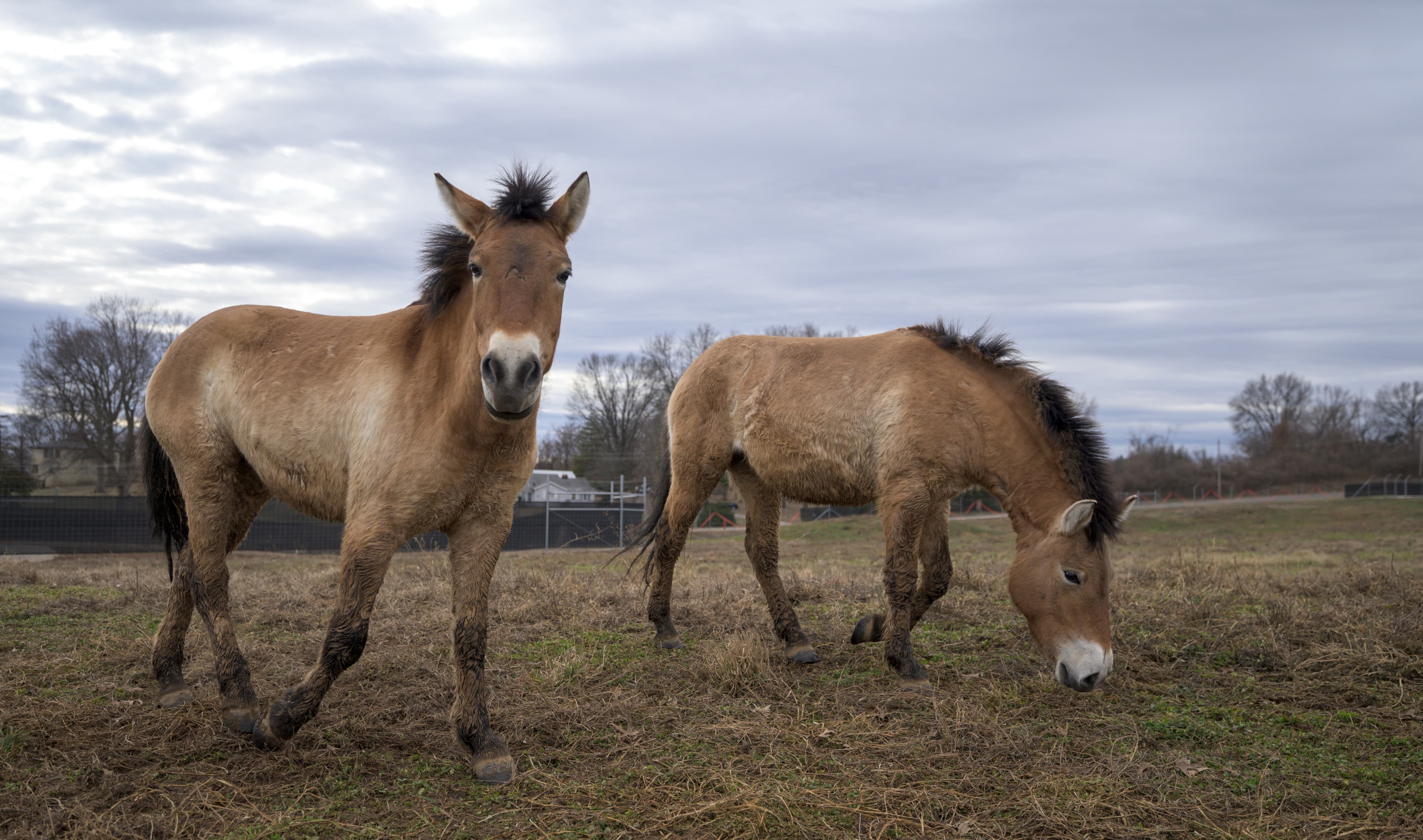
Przewalski's horses, Nika and Sarnai, arrived at Saint Louis Zoo WildCare Park in December, marking the first time that Saint Louis Zoo has cared for this species considered the last truly wild horse on the planet.
Once classified as Extinct in the Wild, the Przewalski horse was once eradicated from its native habitats in Mongolia and other regions of Central Asia and Eastern Europe. By the early 1900s, fewer than 20 individuals were left scattered across zoos around the world. Dedicated conservationists and zoos joined forces to bring the species back from the brink of extinction. Over the past 50+ years, coordinated breeding and reintroduction programs have helped the population grow to about 2,000 today, including free-ranging groups established in their native habitats.
The team at WildCare Park is thrilled to contribute to the next chapter of this species' remarkable comeback story.
January 2025: WildCare Park announces a new species: Scimitar-horned oryx
A new species with a great conservation story has arrived at Saint Louis Zoo WildCare Park: The scimitar-horned oryx.
Eight oryx made the journey this fall from other accredited zoos to WildCare Park and are settling in well to their new home.
This marks the first time the Zoo has ever cared for this species of antelope, but we've played a significant role in oryx conservation for many years. Once listed as "Extinct in the Wild,” the species reached a milestone in 2023 when a successful reintroduction effort supported by Saint Louis Zoo and many others helped downlist the classification to “Endangered,” according to the International Union for the Conservation of Nature (IUCN) Red List.
The Saint Louis Zoo WildCare Institute's Saharan Wildlife Recovery Center was the incubator and U.S. base of operations in the development of the Sahara Conservation Fund, which helped lead recovery of the scimitar-horned oryx and other important desert species. We remain one of many accredited zoos supporting its core operations today. Despite the successes, there is still significant work that needs to be done to safeguard these animals. The team at Saint Louis Zoo WildCare Park will continue to support the population of this flagship desert species, both in human care and in the wild.

August and September 2024: First two addax born
Saint Louis Zoo WildCare Park reached another exciting milestone in 2024 with the first two addax calves born on site less than a month apart.
Addax are a critically endangered antelope species endemic to the Sahara Desert. As few as 100 remain in the wild today.
A male, Atlas, was born Aug. 16, 2024, to parents Arwen and Arlo. In his first two months of life, he's been very adventurous. He toddled along behind mom and tried to keep up with the herd from a very early age.
Less than three weeks later Sept. 3, a female calf, Poppy, was born to Penny and Arlo. Poppy was more skilled as a “hider” calf during her first week of life, but within a few weeks became a little shadow to her big brother.
Atlas and Poppy represent an early success for the section of WildCare Park dedicated to conservation breeding of some of the world's most endangered species, The Kent Family Conservation and Animal Science Center. The Saint Louis Zoo's Saharan Wildlife Recovery Center is also actively working on addax reintroduction efforts and protecting critical addax habitats in the wild.
Both calves are healthy and thriving as the youngest members of WildCare Park's growing herd. By September 2024, WildCare Park was home to 14 addax, three banteng, six Grevy’s zebra and one Somali wild ass with many more species on the way.
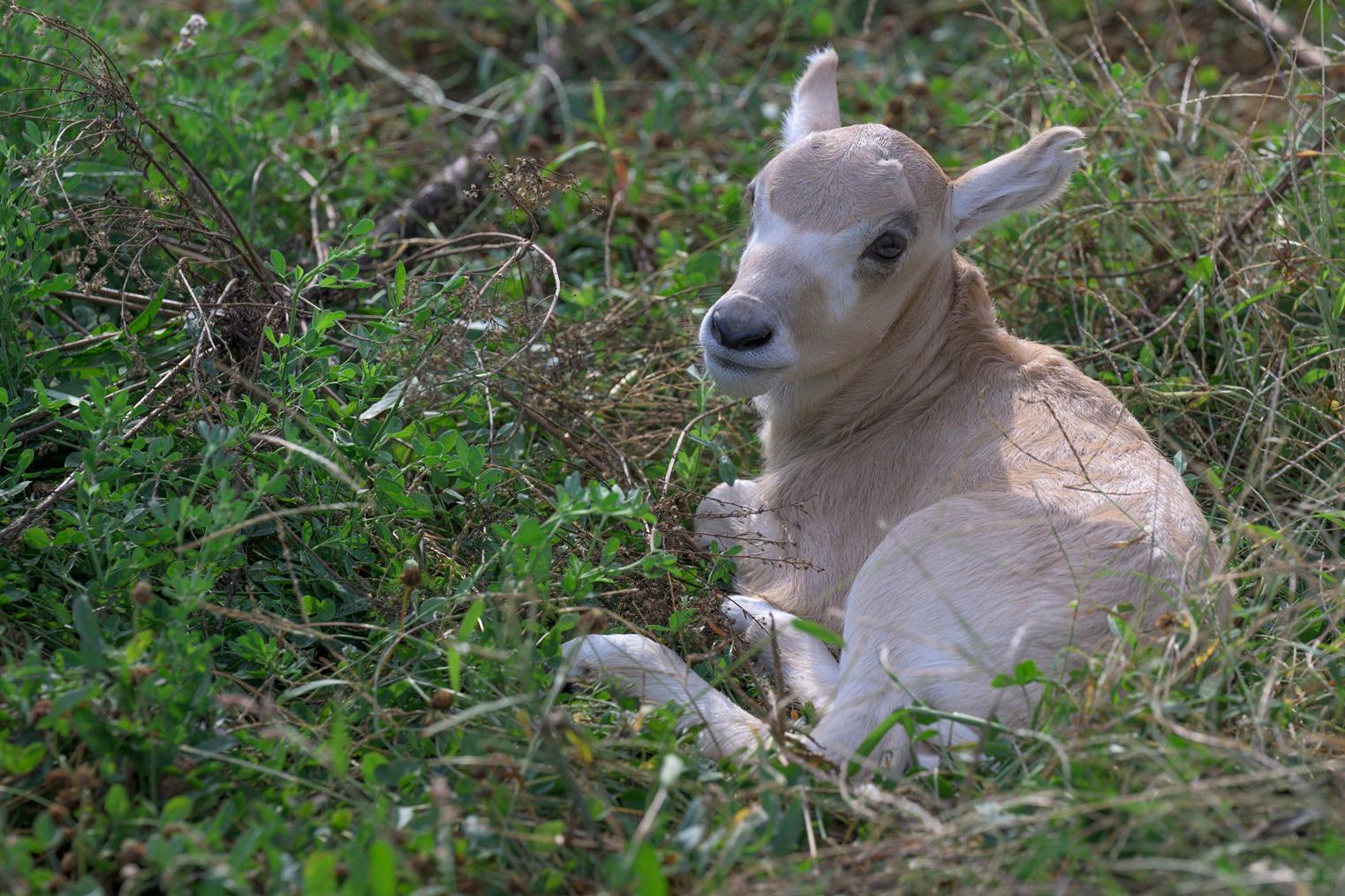
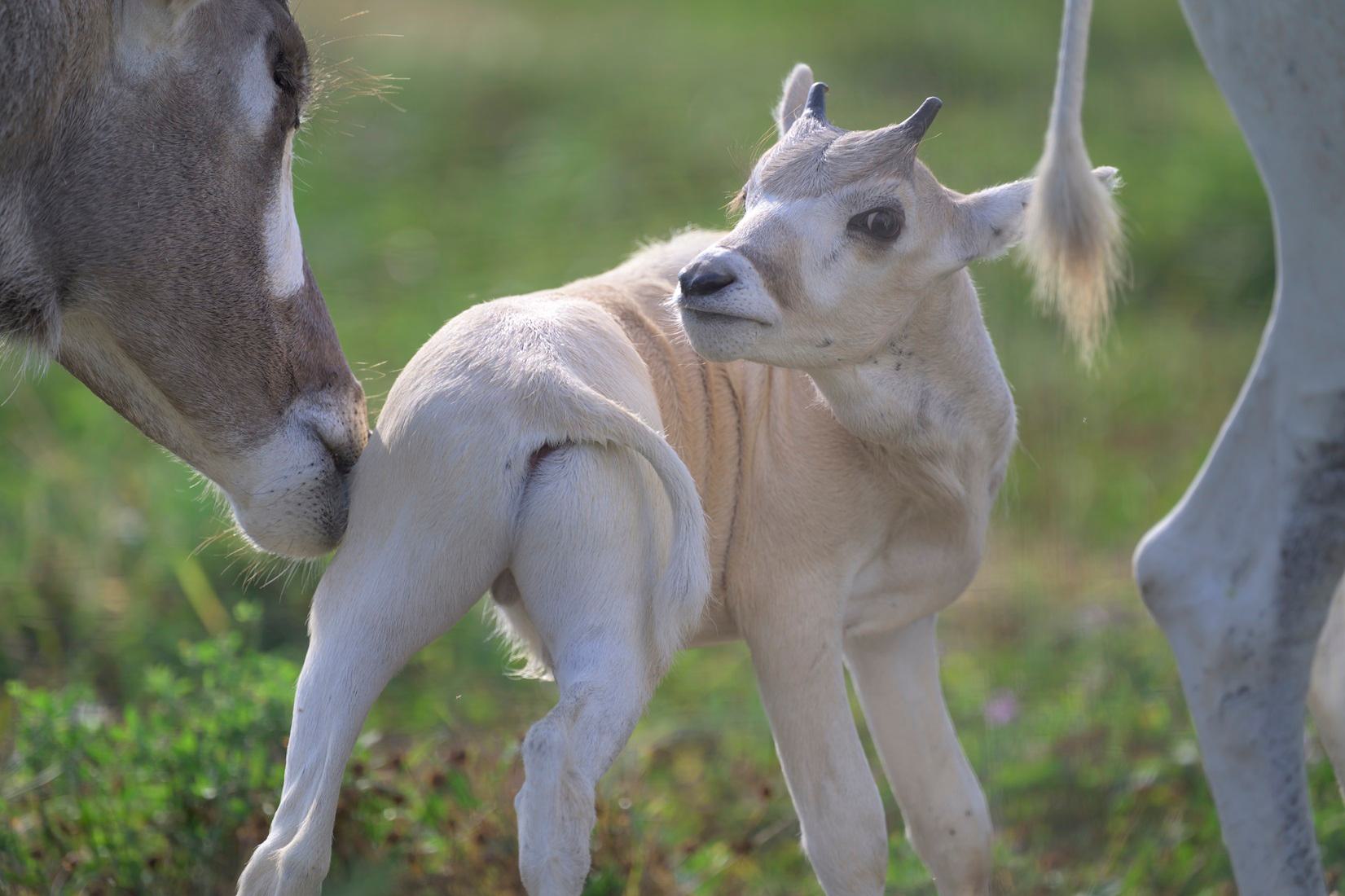
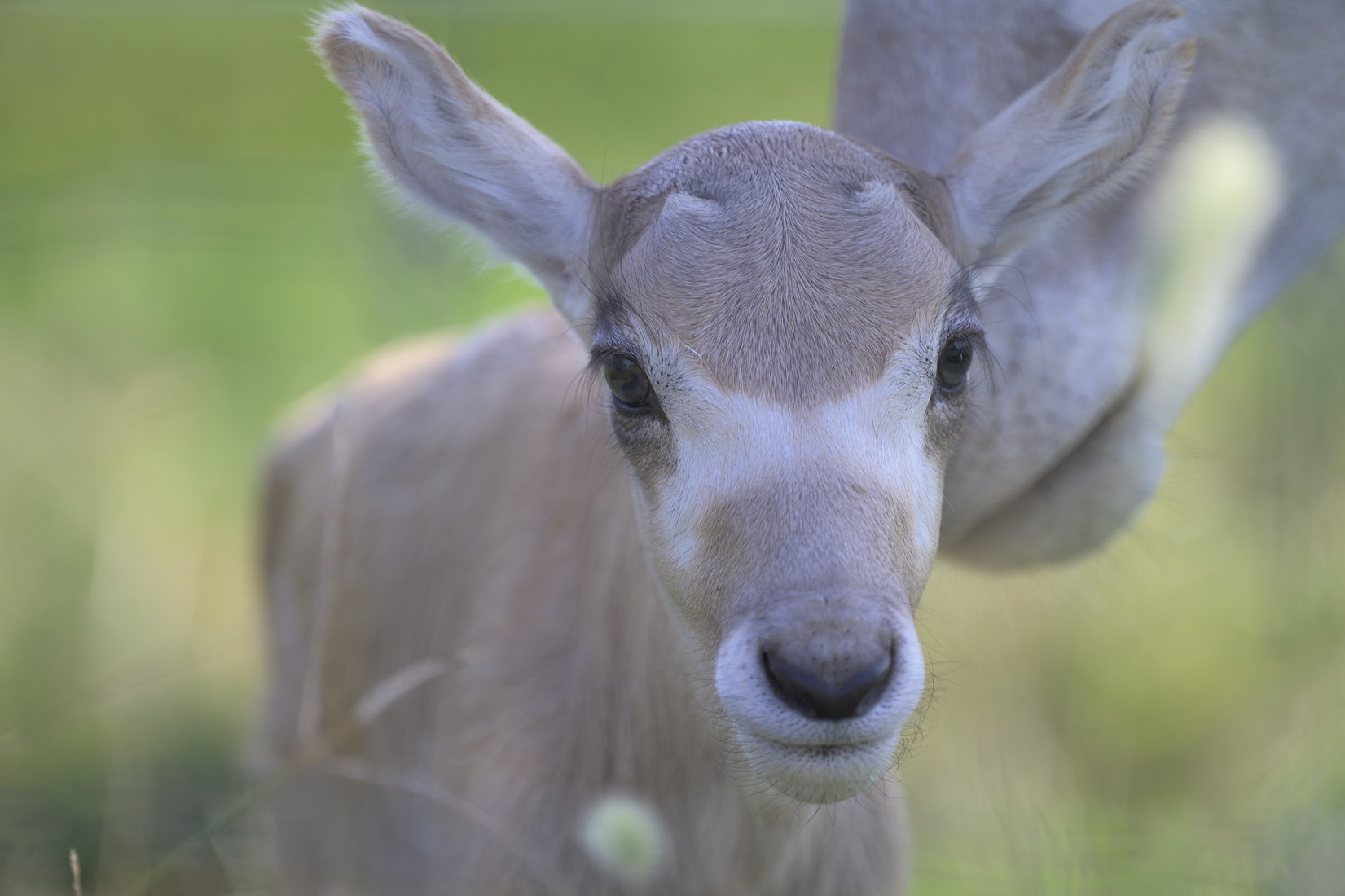
June 2024: WildCare Park releases economic impact report
The Zoo released a new fly-through rendering of Saint Louis Zoo WildCare Park and an economic impact report estimating the project will generate over $660 million in economic activity in the St. Louis region within a decade.
Combined with the Saint Louis Zoo in Forest Park, the impact comes to more than $2.5 billion over the next 10 years.
“We are creating a place where endangered and threatened animals can thrive,” said Dwight Scott, Dana Brown President & CEO, Saint Louis Zoo. “But this report makes it clear WildCare Park will help the regional economy thrive too."
April 2024: Zebra Roxie becomes first animal born at WildCare Park
A female Grevy’s zebra foal was born at the Saint Louis Zoo WildCare Park on April 16, 2024. This foal makes history as the first animal ever born at WildCare Park!
The foal, Roxie, weighed 95.8 pounds at birth. She is doing well and bonding with her mother, Gemma, and another female zebra, Laila, in the Kent Family Conservation and Animal Science Center, a facility within WildCare Park dedicated to sustaining endangered and threatened species. Roxie’s parents are 7-year-old Gemma and 11-year-old Presley who were originally paired together at the Saint Louis Zoo in Forest Park as part of the Association of Zoos and Aquariums Species Survival Plan for endangered Grevy’s zebras, a program to manage a genetically healthy population of this species in North American zoos.
January 2024: Zoo Names WildCare Park Director
Following the completion of a national search, the Saint Louis Zoo has named Sabarras George its next WildCare Park Director. He will assume the role on February 5, 2024.
“I believe that our staff, supporters and the community will really like Sabarras,” said Dwight Scott, Dana Brown President & CEO, Saint Louis Zoo. “I’m confident that he will help grow our conservation efforts and successfully lead the development of WildCare Park that will open in 2027 with amazing guest experiences.”

Fall 2023: First animals arrive at WildCare Park
Four critically endangered addax and two endangered Grevy's zebras now reside at Saint Louis Zoo WildCare Park located in north St. Louis County.
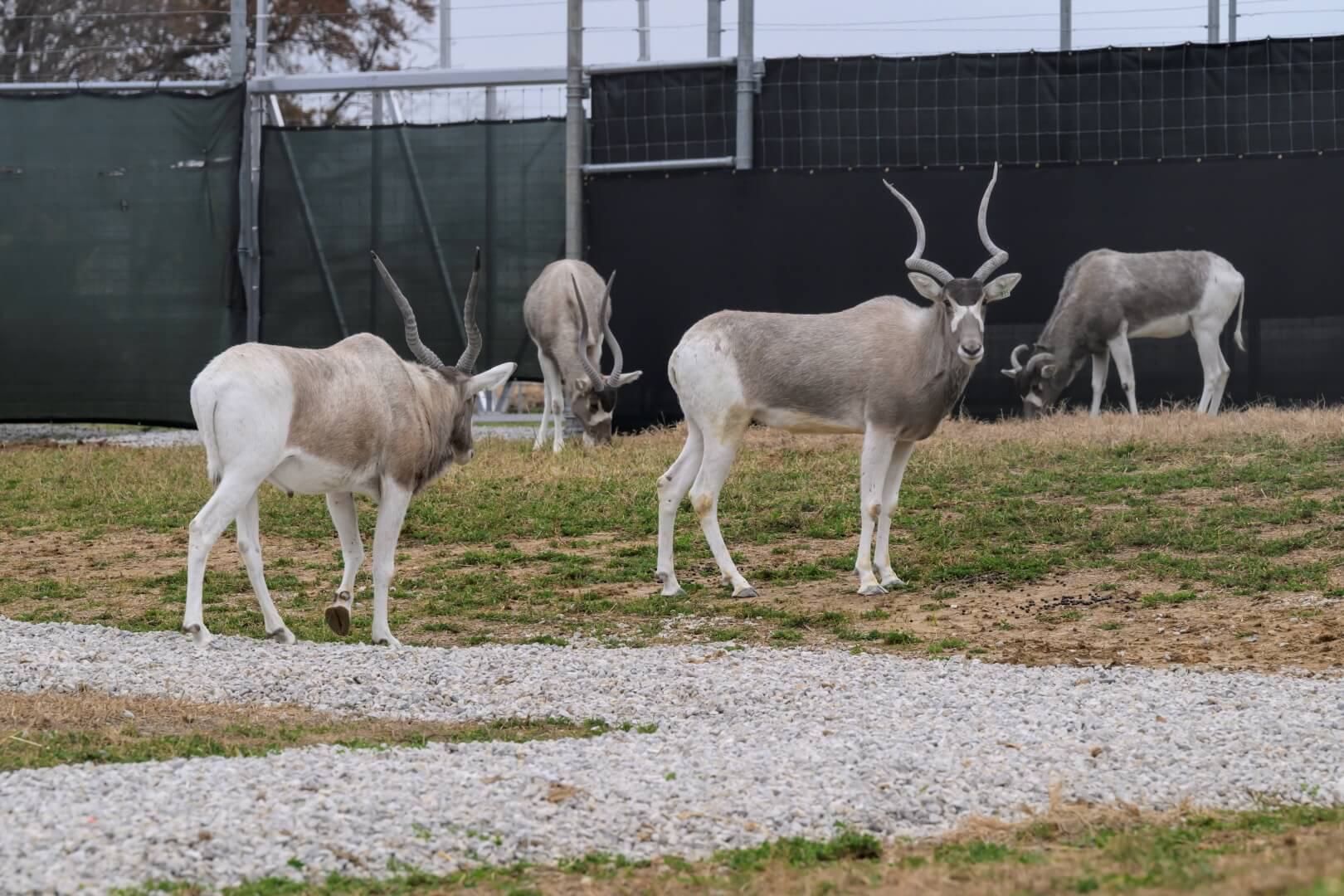
The zebras and addax came to WildCare Park in fall 2023 from the Saint Louis Zoo in Forest Park and from other Association of Zoos and Aquariums-accredited zoos.
By fall 2024, construction at WildCare Park consisted of demolition of a few older buildings, fence installation and grading around the perimeter of the property, restoration of 260 acres back to native grasses, construction of barns and a utility building and renovation of the headquarters building with a new observation deck.
July 2022: Development plans announced
In July 2022, the Zoo announced development plans and a construction progress update for WildCare Park:
- Project estimated to cost $230 million
- Building demolitions nearing completion and perimeter fence installation underway
- Targeting public opening for 2027
December 2020: Name unveiled
In December 2020, the Zoo unveiled the name for this historic project: Saint Louis Zoo WildCare Park. The Zoo also announced a leadership gift from longtime Zoo supporters, the Kent family, to name the Kent Family Conservation and Animal Science Center located within the park.
